It made a forced landing near Ala-Sedoksa on 14 September 1942, and was recovered by Finns.
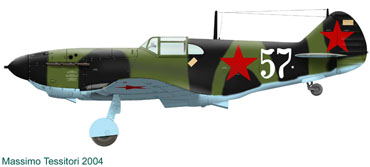
|
an aircraft captured and reutilized by Finnish AF - part 2 By Massimo Tessitori |
|
|
| White 57 was a LaGG-3 captured during the Continuation War.
It made a forced landing near Ala-Sedoksa on 14 September 1942, and was recovered by Finns. |
 |
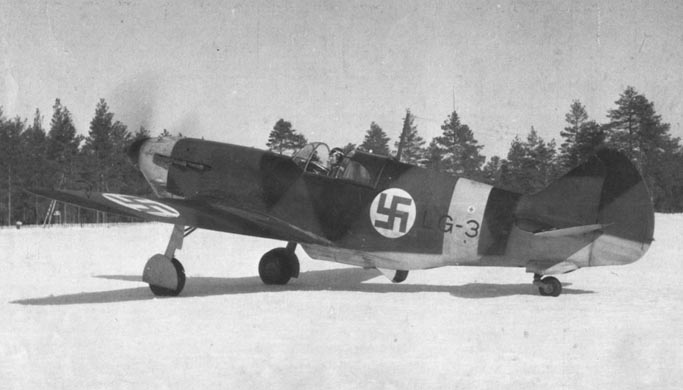 |
The aircraft became LG-3 in Finnish service, and was assigned to LeLv 32 during winter1942/43; this unit was based based at Nurmoila, on the Olonets isthmus. |
| LG-3 followed other two aircrafts, LG-1 and LG-2; all these were intended
to intercept the fast Pe-2s bombers often penetrating the Finnish air space.
These missions were usually conducted by one LaGG only. A mission with two LaGGs (LG-1 and LG-3) was performed only on 27 October 1943, when a combat with a Pe-2 and two MiG-3s ended without any loss on both sides. |
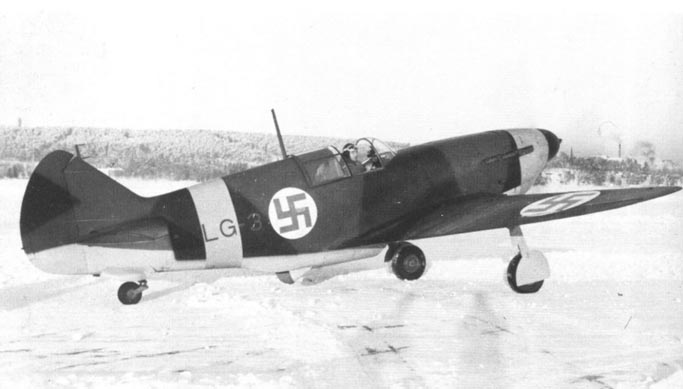 |
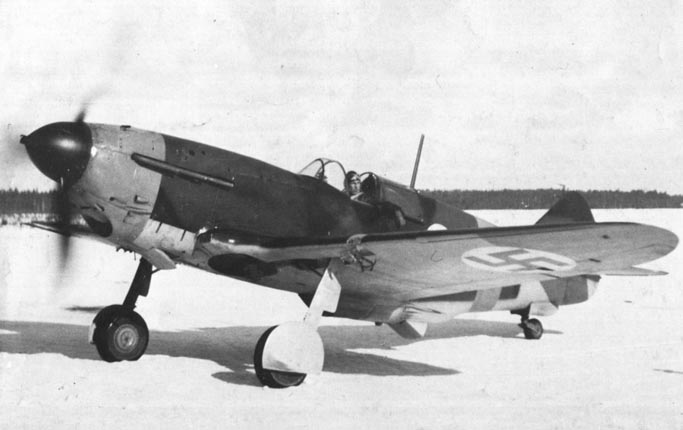
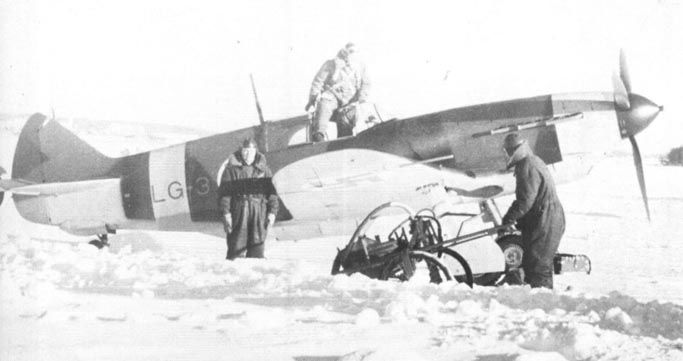 |
The aircraft was of 35th series and its characteristics are:
wing slats, pitot on the lower wing surface. |
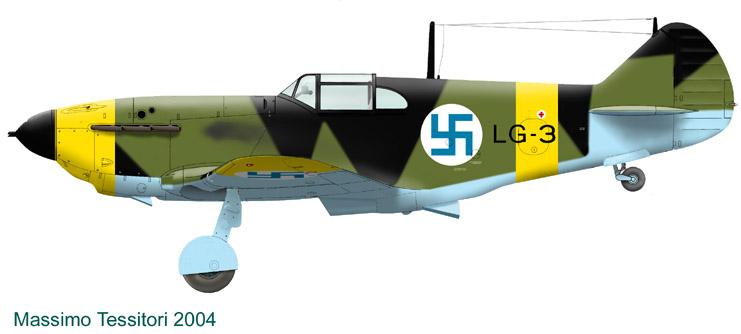 |
|
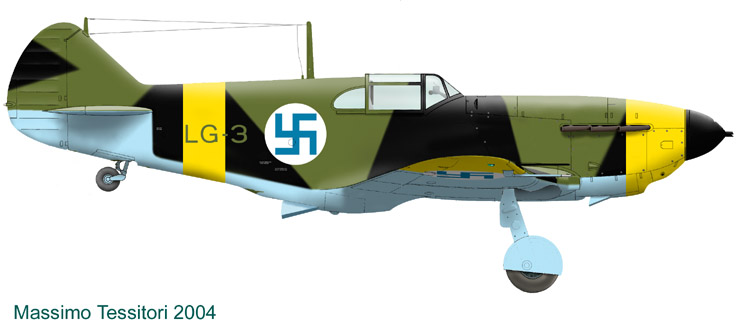 |
|
|
|
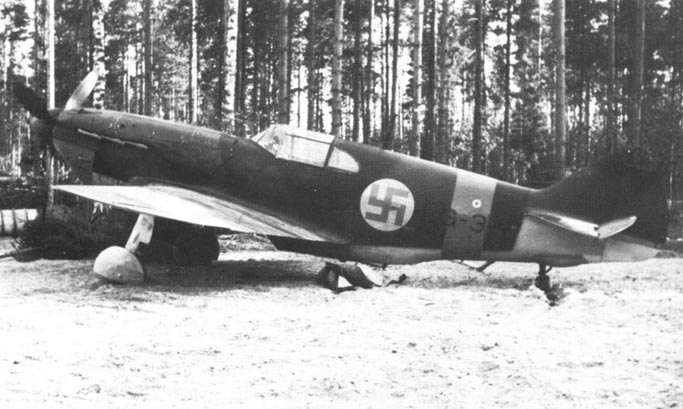 |
During the summer of 1944, LG-3 was slightly modified:
|
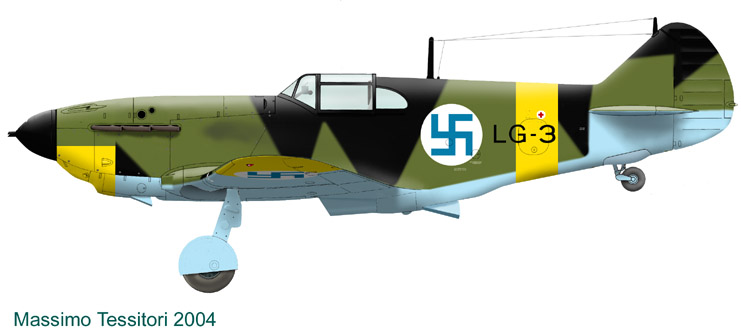
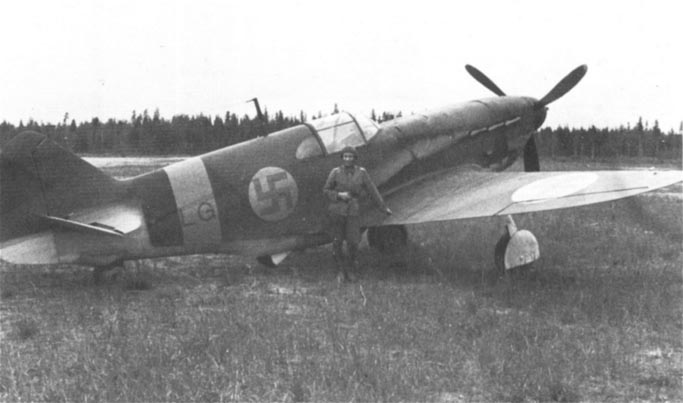 |
This image allows to see the effect of exhaust hot fumes on the paint: it looks lightened instead than turned to black. |
| Here LG-3 is on a wooden platform repaired in a wood.
The vegetation shades let us understand that the recovey was well hidden. Note the low tyres: the aircraft was not ready to take off. |
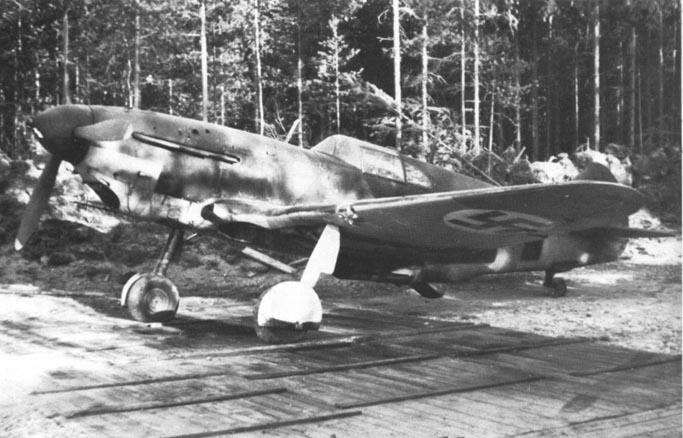 |
|
|
 |
On 4 September 1944, Finland made an armistice with Soviet Union.
On 1 April 1945, blue svastikas were replaced by small white-blue-white roundels and yellow bands were deleted, but the LaGGs never flew with such markings. |
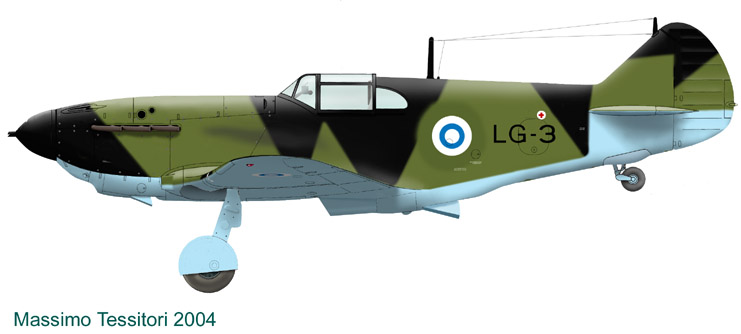 |
In this configuration, the yellow bands were completely repainted with
camo colors. The left side of the tail looks repainted green too, without
the black triangle.
Again, we see the shorter antenna mast and the tail wheel doors locked in closed position. |
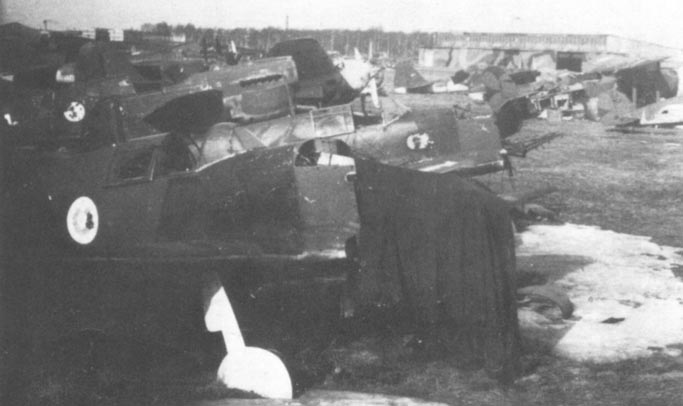 |
Both remaining LaGG-3s (LG-1 and LG-3; LG-2 was already written off because of a bad landing) were scrapped after the war. The image looks to show a P-40 and a pair of SB too. |
A special thank to Jouni Ronkko for his collection of scans,
that are the base for this research.
All these photos, scanned from many publications (including LaGG
fighters in action) come from Keski-Suomen Ilmailumuseo.
|
|